How to Make a Subway Map with John Tauranac
Hear from an author and map designer who has been creating maps of the NYC subway, officially and unofficially, for over forty years!


na
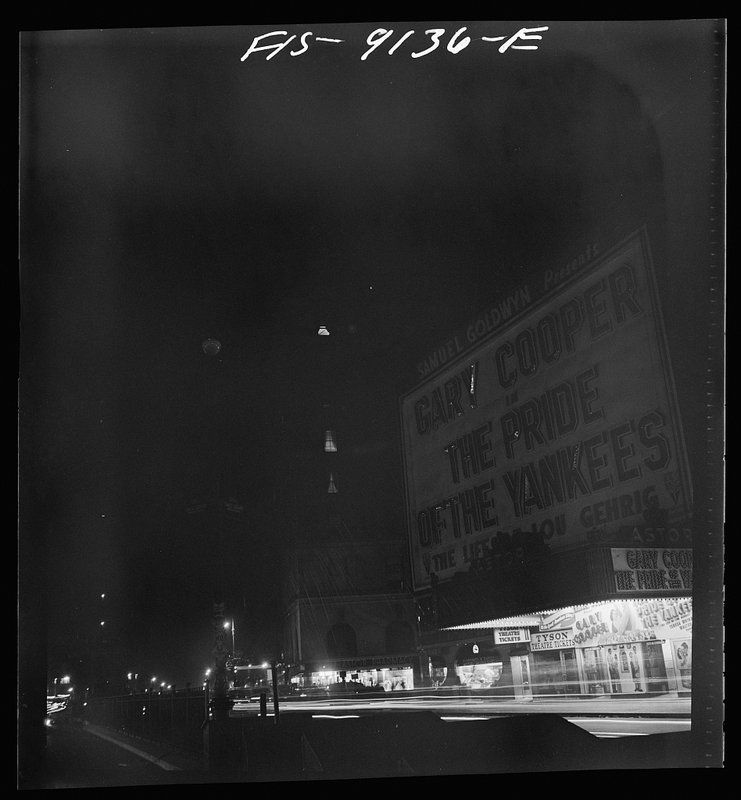
Dimout in September 1942 in Times Square Photo by Marjory Collins from Library of Congress
Back in March we reported the initial shutdown of Broadway, the heart of America’s theater industry, when all 31 plays and musicals in progress were temporarily suspended. Since then, a lot more has gone dark in New York City and The Broadway League announced an extension of the shutdown through May 2021.
Yet, this isn’t the first time that Broadway has been shut down. Although Broadway theaters did not close for the 1918 Spanish flu epidemic, Broadway went dark due to labor strikes, natural disasters, and tragedies like 9/11. Here is our list of times that Broadway shut its doors to the public.
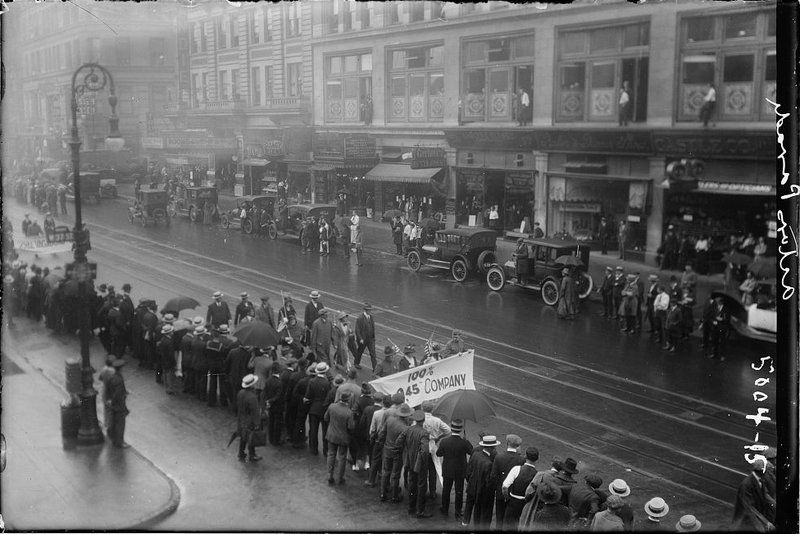
Actors Parade during Actors’ Equity Strike in 1919. Photo by Bain News Service, from George Grantham Bain Collection (Library of Congress).
Between August 7 and September 7 of 1919, Broadway theaters shut down in waves during the Actors’ Equity Strike. During this month-long period, 37 Broadway shows were darkened and 16 were prevented from opening. In 1913, many actors decided to unionize into the Actors’ Equity Association, which aimed to regulate contracts and fair treatment for actors, and after many failed attempts to reach these goals, the AEA declared a strike against the Producing Managers’ Association.
Actors held parades in the streets and walked out of theaters during the strike. Twelve famous theaters like Shubert Playhouse and Gaiety closed on August 7, and managers were forced to give an estimate of $25,000 in ticket refunds that night. The strike also grew to cities like Chicago, Boston, and Philadelphia. Theaters fully opened again once the AEA signed a contract with producers that contained nearly all of the AEA’s initial demands.

Dimout in September 1942 in Times Square Photo by Marjory Collins from Library of Congress
During World War II, Broadway did not shut down but the area was subject to “dim-outs”. The first test was performed by the in 1942, when the U.S. Army wanted to determine if the entire city could potentially go dark in the event of air-raids. According to the book Mr. Inside and Mr. Outside, lights would have to be turned off or dimmed for half an hour during the tests, during which “air raid wardens and police officers would scour Manhattan and New York’s four other boroughs in search of violators who risked arrests and fines if they failed to turn off lights.” In the book New York Night: The Mystique and Its History, writer Mark Caldwell explains that all the illuminated lights had to be turned off, including those big billboards in Times Square, and lights were allowed only under the theater marquees (you can see this in the photograph above). According to Billboard Magazine in 1942, the blackouts sometimes occurred after people had already paid to enter the theaters.
More dim-outs would occur in the war and the practice of dimming the lights of Broadway would become a tradition after the war to honor the loss of theater greats.
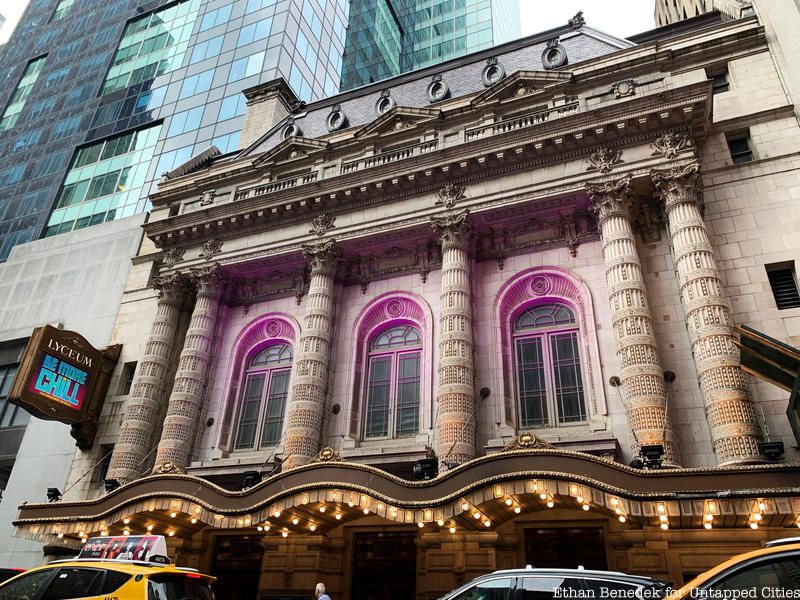
In 1960, Broadway shut down for 11 days as a result of a major AEA strike over pension disputes. According to a New York Times article, 22 theaters were closed and around 23,000 seats were left unoccupied.
The strike also impacted midtown restaurants, hotels, and travel agencies by 25 to 75%. During the strike, many theaters ruled that “no refunds would be made until the shows actually failed to happen,” according to the New York Times. Movie theaters at this time seemed to experience an uptick in business as a result of the closures.
In 1964, representatives of the AEA went on strike for one day in June over pay for actors. At the start of negotiations, 27 shows representing over 750 performers were under threat of strike, but by the time of settlement, this fell to 16 shows since some shows closed and others were granted exemptions from strike.
Following a four-hour bargaining session, a new agreement resulted in performers receiving a $12.50 increase over four years in their weekly minimum salary.
Four years later, actors, singers, and dancers walked out of performances for three days when the AEA asked for a 54% weekly wage increase for its members from $130 to $200. The AEA also demanded a 60% increase in road pay and a reduction in the contract renewal period from four years to 30 months. Although rent prices in the 1960s rose considerably, producers only offered a 30% wage increase for Broadway and road show actors. On June 17, 19 Broadway productions and 10 road shows were closed. Actors and producers soon after agreed on a three-year contract which increased weekly wages by 20%, and 16 of the 19 closed shows reopened immediately after the strike. In November 1970, the AEA held an off-Broadway strike over minimum wages, making it the first off-Broadway actors’ strike.
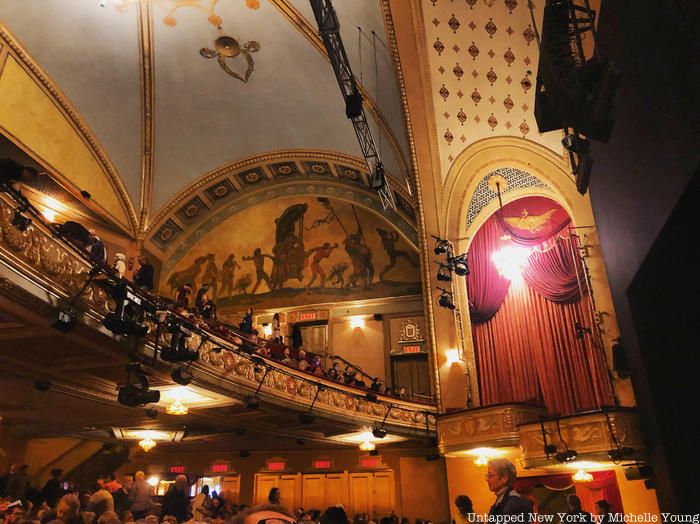
The Bernard B. Jacobs Theatre
1975 saw a 25-day musicians’ strike that shut down over a dozen Broadway shows. On the first night, nine Broadway theaters were shut down when over 300 musicians went on strike, the musicians’ union demanding a pay increase from $290 to $425 a week in a three-year contract. The first day of the strike did not affect performances by Frank Sinatra, Ella Fitzgerald, and Count Basie.
Yet, after 25 days, 12 box offices opened up after the musicians and producers ratified a new three-year contract, providing for pay increases of $90 a week over three years. As a result of the strike, $3.5 million in ticket sales was lost and many staff in other industries were laid off.

Photo by James and Karla Murray
Following the September 11 terrorist attacks, Broadway shut down for two days as many New Yorkers feared for the future of the city. Although many shows reopened just two days later, a handful of shows were unable to reopen due to immediate financial losses and fear that businesses would continue to suffer for the next few weeks.
Following the attacks, the city bought 50,000 theater tickets for $2.5 million and the state invested over $1 million in Broadway’s promotional campaign. Mayor Giuliani wanted all theaters operating as soon as possible to serve as a symbol for New York’s strength amidst such a crisis. For the next few months after the Broadway shut down, the Twin Towers Fund and other New York organizations raised thousands of dollars to support Broadway as well as Off Broadway productions.
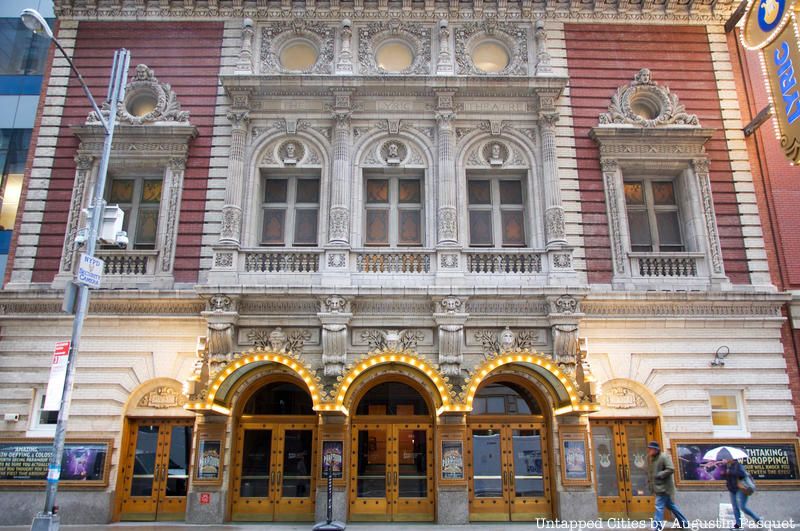
The 2003 Broadway musicians strike lasted for four days from March 7 through early morning March 11, organizations by the AEA, the Associated Musicians of Greater New York, and American Federation of Musicians Local 802 union members. The League of American Theatres and Producers tried to reduce the minimum orchestra size from 24-26 all the way to seven members accompanied by a virtual orchestra. Union members from Local 802 developed a campaign called “Save Live Broadway” which received 30,000 signatures.
325 musicians from Local 802, 650 actors from AEA, and 350 stagehands from the International Alliance of Theatrical Stage Employees went on strike, which shut down every Broadway musical except Cabaret, which had a different contract. During the strike, musicians even arranged a mock funeral for live music in Times Square. It was estimated that $7 million was lost per performance for New York businesses. At the end of the strike, minimum requirements for musicians decreased to 18-19, which would stay in effect for the next 10 years.
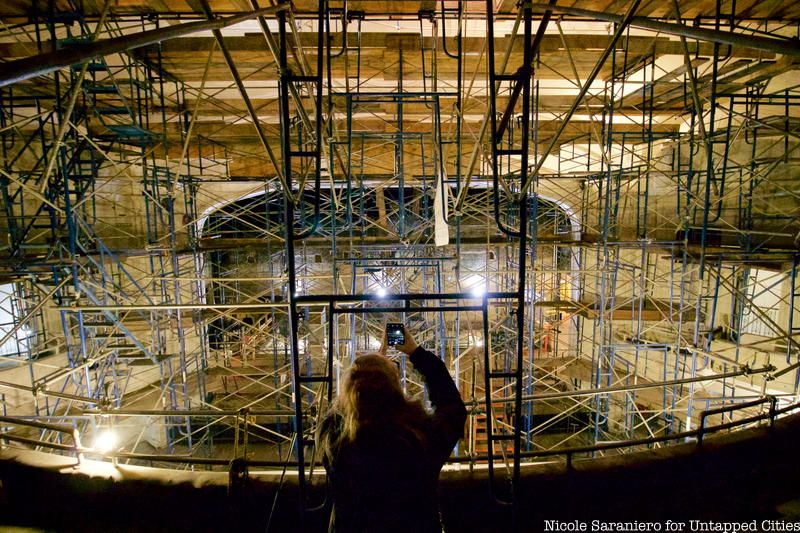
The 2007 Broadway stagehand strike, which lasted for 19 days, was led by the International Alliance of Theatrical Stage Employees Local One, resulting in the closure of 31 theaters and 27 shows. The strike cost the city $2 million per day, or close to $40 million at the end of the strike. This was the first IATSE strike in the union’s 121-year history. Stagehand contract issues included loosening load-in rules (in effect when a show moves into a theater), overtime work during load-ins, wage cuts, and increases in stagehand responsibilities during performance calls (eight performances per week).
At the end of the strike, the union and producers agreed that union workers were to receive significant raises, and stagehands could be dismissed during load-ins. Additionally, stagehands received double pay for working an hour after the show finished.

Blackout during Hurricane Sandy, from a video by Jeff Seal
In October and November 2012, Hurricane Sandy devastated the New York area and caused chaos and disarray throughout the country. Broadway shut its doors on the evening October 28 and remained closed until October 31. By the night of October 28, the subway system had already begun to shut down, and although most Broadway shows have no Monday performances, the storm hit New York that night.
By Tuesday, Broadway was still dark, but transportation began to slowly start up again. By Wednesday, most shows resumed performances despite massive traffic delays and only a few bus and subway routes open. A handful of shows like The Performers and Scandalous closed after only a couple of weeks.
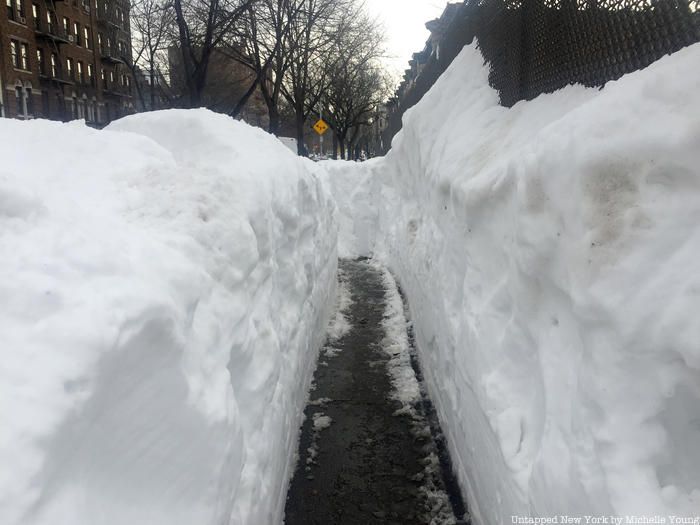
Snow piles in the January 2016 snowstorm
On Saturday January 23, 2016, the Broadway League cancelled all Broadway shows because of a major snowstorm, which led to a New York travel ban and a suspension of public transportation. Andrew Cuomo declared a state of emergency, and on the recommendation of Mayor de Blasio, the blizzards forced Broadway to go dark.
The blizzard was the second largest in New York City history, but most Broadway shows opened up the following day.
Time lapse video of the 2019 blackout by @nyc_timescape
Following a Saturday evening power outage on July 13, 2019, more than 20 Broadway shows were cancelled on the west side of Broadway. Con Edison noted that 42,000 customers were affected by the power outage, which impacted performances of shows like “Hadestown,” “To Kill a Mockingbird,” and “Hamilton.” Shows on the east side of Broadway went on as scheduled. All matinee and evening performances on Sunday went on as scheduled.
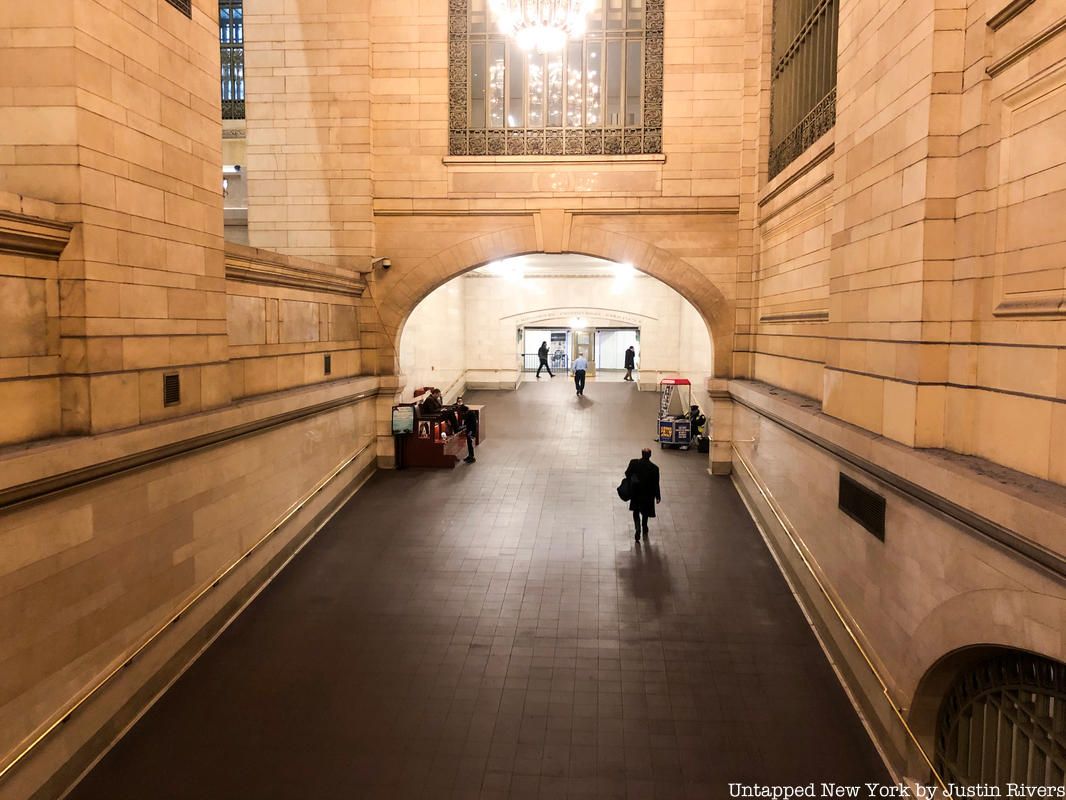
On March 12, Governor Cuomo announced that gatherings larger than 500 people would be cancelled or postponed. This meant that effectively, Broadway would go dark. In fact, a Broadway theater is defined as having 500 seats or more. Broadway has temporarily ended all 31 plays and musicals currently in progress through at least April 12th.
Mayor de Blasio noted at the briefing, “That’s really, really painful for the many, many people who work in that field, let alone so many New Yorkers and people all over the country who really look forward to these events, these concerts, these sports events, and it’s really going to be kind of a hole in our lives and it’s painful.”
Next, check out NYC’s former quarantine hospitals and islands.
Subscribe to our newsletter